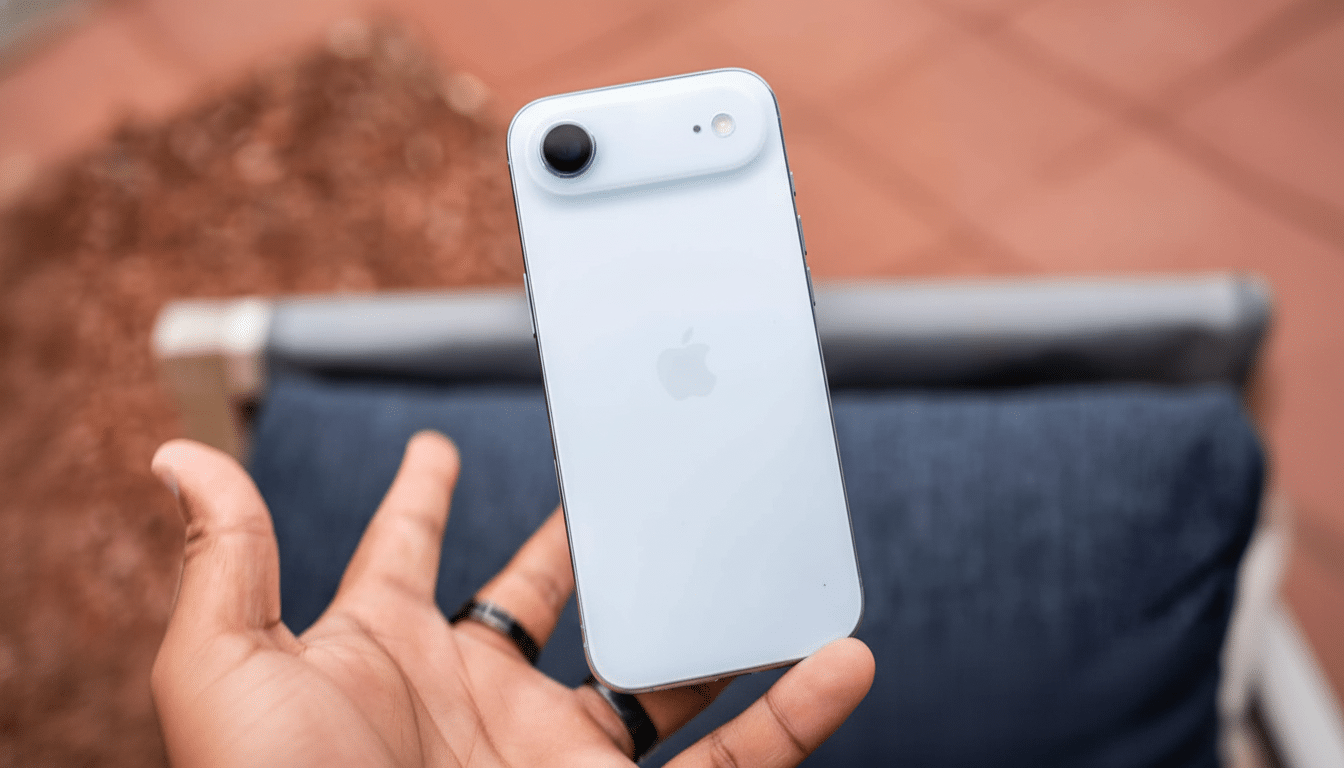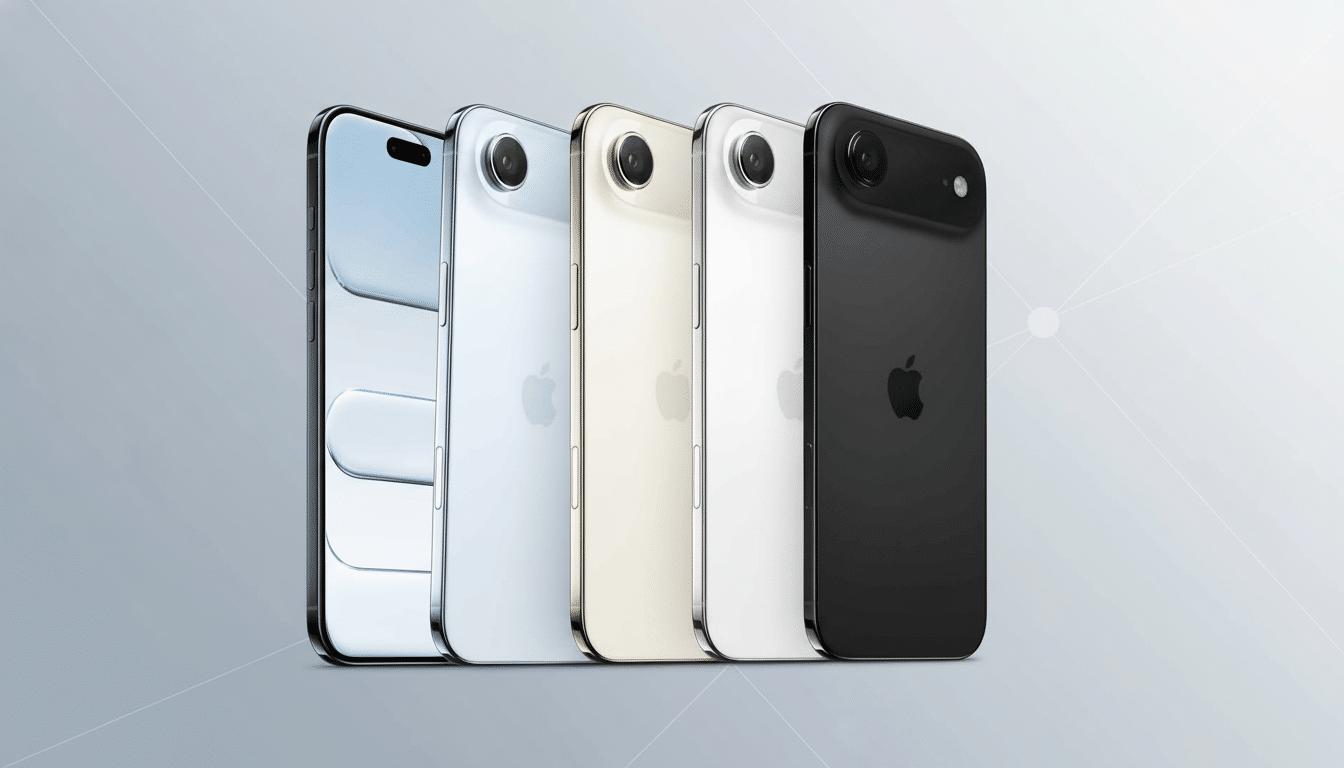The iPhone Air is not just yet another thin iPhone; it’s a road map to the future. Apple’s new ultra-thin model is the design playbook/silicon integration leading into whatever occurs next down the iPhone line, in all likelihood a foldable.
What the iPhone Air signifies
At 5.6 millimeters, with a 6.5-inch display, the Air recalibrates Apple’s obsession with thinness and weight. It’s also cut on features: no Ultra Wide camera, no macro mode, and battery life rated up to 27 hours, versus the base iPhone 17’s 30. It costs $999, more than the $799 iPhone 17 and less than the $1,099 Pro — placement that suggests Apple is pushing the Air as a design-forward testbed rather than a volume play.

Seen that way, the trade-offs are reasonable. It’s a good concept.” Apple is proving out a new internal architecture in those computers, swapping raw capacity for efficiency and space recovery — the sort of groundwork that thin devices, and their potential, future folding brethren, can be built on.
Efficiency today, flexibility tomorrow
As apple puts it, there’s more Apple-designed silicon in the Air than in any other iPhone before it: the A19 Pro 5‑core GPU, the N1 wireless chip, and the new C1X cellular modem. Apple claims C1X is faster than last year’s top modem while consuming comparably 30 percent less power. Combine that with an adaptive power mode in iOS 26 and a reconfigured camera housing (which frees up internal volume), and you see a pattern: It’s all about shaving power budget and reclaiming space without giving up on the core experience.
That strategy is similar to what Apple did with the new iPad Pro, which used finer grained packaging around the custom silicon, and a tighter thermal envelope to produce a thinner body. Apple is even okay telling customers to rely on a MagSafe Battery with the Air — and, significantly, says that battery life is at its best when the pack remains in place. That’s a change in guidance that telegraphs how closely Apple is tuning around real-world energy management, not just spec-sheet capacity.
Why thin is so important for foldables
Foldables are a packaging challenge as much as a materials one. Hinges, dual batteries, extra displays, reinforced chassis; they all contribute to that bulk. The average foldable device size is between 10–14mm when folded. To deliver a folding iPhone that isn’t two phones hinged together with tape, Apple needs to cut millimeters and grams from each stack — motherboard, camera, battery, radios, glass.
The Air shows Apple’s path. Ceramic Shield 2 now envelopes the back, strengthening the chassis. The horizontal camera bar minimizes z-height variance making room to incorporate open space for a bigger, flatter battery. An in-house modem that’s more efficient cuts down on thermal and board real estate constraints. These are the very same limitations a future hinge and ultrathin glass would require. According to Display Supply Chain Consultants, foldable panel thicknesses keep getting thinner and creases keep getting tougher; when combined with a sub-6mm slab design, a portable foldable is much more achievable.

Battery tech is the limiting factor. Industry studies in the improvement of lithium-ion, for example, usually project annual energy density increases of single-digits. Until there’s a chemistry breakthrough, the only way to add flexibility without killing endurance is to use less power and pack in more for a set amount of space. The Air is a live-fire exercise in actually doing both.
A market Apple can’t overlook
Foldables are now a niche — but an increasingly mature one. IDC and Counterpoint Research estimated that about 16 million foldable smartphones were shipped in 2023, with projections in the next few years ranging from 25 million to 30 million units as prices drop and durability improves. Samsung remains ahead, but the share has been whittling away as Chinese vendors have upgraded hinge designs and reduced weight. The average selling price is significantly above the premium category slab — just the high-margin segment Apple historically enters only when it can disrupt in a user experience.
Well-sourced analysts and journalists have reported Apple is experimenting with foldable prototypes in assorted sizes, and there\’s been some chatter around a larger-screened product arriving before a folding iPhone. The Air’s engineering choices look like prerequisites, no matter the order: thinner boards, cooler radios, stiffer shells and camera modules that don’t hog internal volume.
Lineup strategy: making space for a new shape
The Air is already informing the Pro family, in its materials and its camera layout. It’s easy to envision Apple slipping Air into the main slot over time — thin, light, lots of people will like it — and keeping Pro as the performance flagship. That makes room above or to the side for a high-ticket foldable, without cannibalizing the core range.
Watch the supply chain tea leaves: ultraslim cover glass (Corning has some R&D) more stringent hinge requirements from established mechanical partners, and next-gen modem and board packaging (say, at TSMC) as Apple migrates to denser nodes. The more of that Apple can do in-house — as C1X”s rumor would suggest — the greater freedom it has to redraw the internal map a foldable would need.
Bottom line
The iPhone Air is about making compromises, at least when it comes to daily use. As a signal, it couldn’t be louder or clearer. Apple is focusing on efficiency, structural rigidity and internal simplification — the very elements required to make a folding iPhone seem inevitable rather than experimental. If the iPhone’s future is flexible, the Air is the hinge it winds around.

